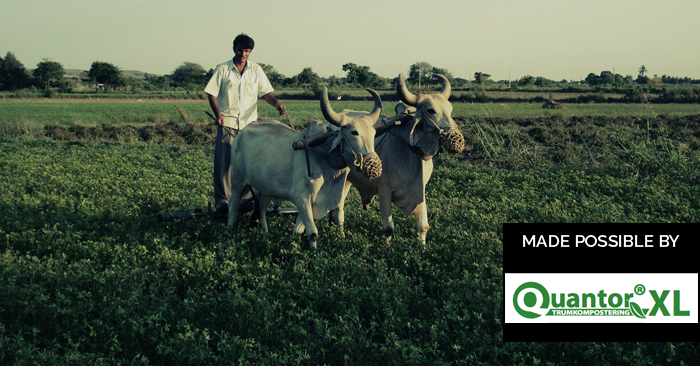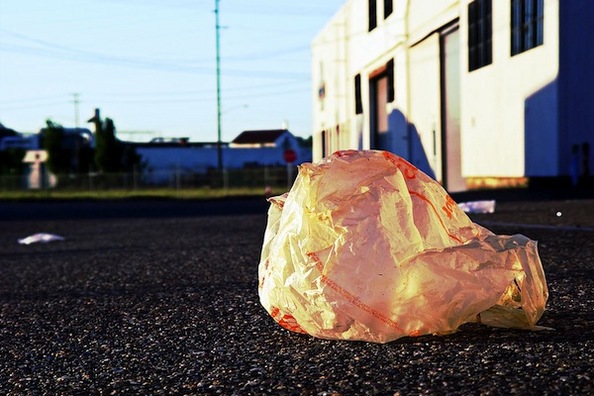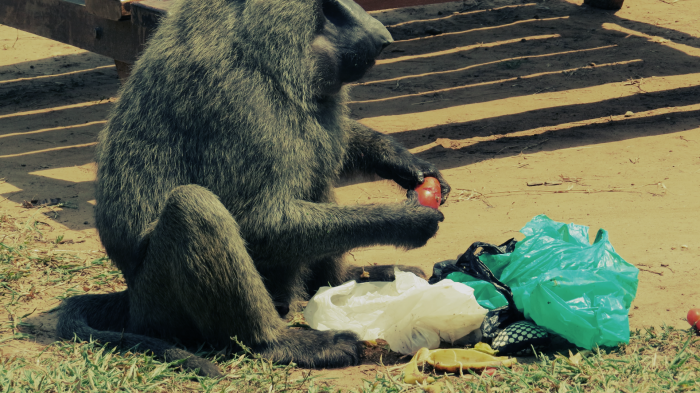Generating Biogas in Developing Countries

This episode corresponds to Lesson 7 (coming soon) of our course.
This third episode of The Organic Stream is dedicated to biogas generation in developing countries. Eleen Murphy interviews Winfried Rijssenbeek from FACT Foundation to discuss the setup of anaerobic digesters in these regions where biogas generation is more than a source of energy.
Thank you to ESCAB for making this episode possible.
QuantorXL® Drum Composting is a turnkey system that achieves full hygienization. Manure, sludge and bio-waste can be composted and turned into a resource, recycling many important nutrients back to nature. QuantorXL® is approved by the Swedish board of agriculture and fulfills EU regulations.
TRANSCRIPT:
Hi there once again and welcome to the show. As always, I’m your host Eleen Murphy and today we’re in the Netherlands, talking to director and RE specialist of the Fact Foundation: Winfried Rijssenbeek. Winfried and the FACT foundation work closely with local partners all over the developing world to help set-up and educate communities about biogas systems. So for this show, we’ll be focusing solely on biogas in developing countries. Topics will include: the types of organics used for production, why biogas systems are not yet a staple in developing countries, and framing biogas as more than just a source of energy.
Lots of great topics to sink our teeth into, so stay tuned!
EM: So the FACT Foundation provides biogas solutions for communities in developing countries, but also provides training, knowledge and support. You have partners across the globe that you work with, and you’re based in the Netherlands, is that correct?
WR: That’s correct. And there’s the Wageningen University, it’s the Agricultural University of the Netherlands and it’s quite well known.
EM: Right and could you tell me a little more about FACT and the work that you do?
WR: I will. We started in 2005 and this FACT Foundation was established by the late Professor Kees Daey Owens, who was first a renewable energy specialist in the Netherlands. So he found out that, yes indeed, developing countries need energy as well. So he decided to establish a foundation, and so in 2009 after Kees has ceased, we got a program developed in which we tested many different types of bioenergy projects.
EM: Cool, and what kind of things did you test?
WR: We started with bioethanol, and we looked at residues (for example cassava peels) and turning that into bioethanol so that people could have either cooking fuel or transport fuel. So we tested bioethanol, we tested biodiesel based on vegetable oils, and we also tested gasification based on wood residues, and we tested biogas. About four technologies were into our portfolio in the Deon program, and we tested that with different partners. Partners in Panama, in Peru, in Uganda et cetera, et cetera. So then, after some three years of doing this, we came to the conclusion that if there’s anything ready for a market, then it is biogas. And biogas seems to be the most easy. The most in installing it, the most easy in operating it. And this is very simple, Eleen: biogas is all about life, and it’s a biological system and to be honest, everybody who can handle a cow, can handle a biogas installation.
EM: Hm, so if biogas is such a great solution, why isn’t it more popular or well known in developing countries?
WR: Why is it not happening there? Because you have a supply and demand, and in the case of developing countries, the suppliers – they are not well informed, because they use maybe obsolete technologies or they have no updated knowledge in many cases. And on the demand side the thing is even worse because many of these people that have the production of organic waste streams, they don’t know about biogas. So they have no idea of that solution, and this is really a struggle that we have. On the one hand, the suppliers are not really customising their systems for the client. And the clients on the other hand don’t know about biogas, so we have really a task. Now, you can say, “can it pay off?” so to say; is it a good investment?
EM: That’s what I just wanted to ask: is it worth setting up?
WR: That is the interesting part. If you look at the investment, it can be expensive but you can also reduce the cost of biogas systems. For example, by using a diesel generator that you add the biogas. So you reduce your costs of buying a totally new biogas generator. The other thing is, in Germany and the rest of Europe, systems have been made for temperate climates so you have insulated bowls, they are compact because the land is expensive, so you make a compact system. Then you have to heat it because if you don’t heat it you don’t get the right temperature. Labour costs are also very expensive in Europe. So we made systems in Europe that are high investments but low operation costs. Now the funny thing is, we have a slightly different situation in developing countries for biogas.
In many countries, you don’t have these high land costs; you don’t have these high labour costs. You have other temperatures. So it makes it all different. And we can show that, in many cases, these systems can be paid off in about three to four years, and the investments – they are relatively mild, depending on the technology, but…
EM: Hmm, interesting…
WR: Yeah so, the funny thing is: how is biogas portrayed in general? And in Europe, we always say that biogas is good as a technology because you have renewable energy coming out of it. But that’s it. Now, look at developing countries: what are the basic issues over there? It’s food security. What happens is that about twenty-five percent of the food production is lost in the stream of transport and logistics, and storage. So, if you energise the food chain
in the proper way so that you have energy to cool the products, or to process, or to stir the products, then you can reduce these losses. This energy is the beauty: biogas can deliver that.
You have a resource or an organic waste stream from the agro-processing and from that you make the energy to allow this agro-processing to happen.
EM: That’s actually what I was keen to ask you as well: since you have experience in this, it would be great if you could detail the different types of organic materials you can use to make biogas.
WR: Yeah. Things that you can use is, for example, organic waste streams like from the palm oil industry. Dairy farms is another sector. All these farms, they produce manure. And, again, when there’s agriculture and forestry, there’s always waste-streams, and it depends on the composition and the availability. For example, in Uganda we know that there is a lot of lakes that is are clogged with water hyacinth. But, if the lake is fully covered with water hyacinth, really you have a problem because then fish won’t be able to grow under it because it shades the water and you get all sorts of trouble. Now, water hyacinth: if you turn that into biogas, the slurry of the water hyacinth, you can take out that slurry and use it as a fertiliser.
EM: That’s an amazing way of dealing with the problem of water hyacinth then!
WR: Right, right. So there’s that sort of thing as well. And what I just mentioned before, we always portray biogas as an energy solution, well I tell you it is much more. It is about the food security. It’s about sustainable agriculture, because people can reduce the chemical fertilser and enhance the soil quality, because this bio-slurry is very good for the soil. And finally, it’s also about sanitation. I mean, if you contaminate rivers and then later on people take water from that river – well it’s not that nice. So for sanitation purposes it’s also good.
So, it’s bringing this topic not as biogas, because if I tell about biogas only as a technology, people will say “well okay technologies, we’re not so interested – we’re interested in people”. Well, we’re talking about people, because we’re supporting food security, we’re supporting all these other benefits. If I talk about biogas only, well it will be a boring story. But if I talk about food security, and the link to the environment, and the link to all these other…sustainable agriculture, then people start to say, “hey, well damn it – this is interesting”.
EM: Excellent points. And if your opinion is that we need to raise awareness of all the benefits of biogas production – what are the things holding us back and where do we need to focus our efforts?
WR: So, this is where the story is very simple. Now, if everybody that is doing biogas is saying “No, you can do it with biogas but you should do it like this”, and the other one says, “No you should do it like that”. (If) there’s no standards, there’s no coherence in that group of alternatives, then the market, they will say: “this seems to be this, and the other one says it’s like that and you don’t know” and everybody says “okay well this is rubbish”. Now if you say – as all biogas-interested people – we form a platform and that platform sends messages always in the same form. And you explain about the advantages of biogas always in the same form, you might create a sort of advertisement to the customers that is coherent, and then maybe it will work.
Another thing is: if you’re working in a platform and you share information about your systems, again, that will help because you can learn much quicker from the other one that doing everything yourself. So, making a sort of platform is one of the things that we thought is necessary. So, the platform is basically about learning and exchanging information so that everybody has the same knowledge. And then it is about dissemination and advocacy.
EM: Aha, right…
WR: So that, basically, we said we should be doing, and in 2013, in the beginning of June, we started to launch this Global Alliance for Productive Biogas. And now we are with ninety-plus partners all around the world: in Africa, in Asia, in Latin America. And we have been talking with all these local producers, research people, associations about biogas. So we have, Global Alliance for Productive Biogas has an international board. So we have been asking our members, our partners: “okay guys, this is what we plan to do – what’s your view on this, this and this and this?”
EM: So the important thing here is that you’re working closely with the communities?
WR: Right. And it made us realise, Eleen, and this might be the interesting thing, but: we’re not alone, because we see, for example, that there are a lot of libraries. And there’re libraries about biogas. There’s a few YouTube-like things or trainings – there is people doing that and that’s also how we came in contact with the Compostory organisation. And yeah we said okay well, if you’re already doing training modules through YouTube and sort of internet videos – that’s perfect so let’s push this thing forward. That’s what we think: we have to convince many people that this is the way to go forward.
EM: Great stuff. And finally, is there any advice you’d like to give to our listeners?
WR: Yeah, I would like to say that if people want to deal with this topic, just have them go to our website, and that website is productivebiogas.org. And we invite everybody to look at the waste operators, the sewage system operators, the agro-processing cooperatives, the agro-industries, and the farmers – to have a look and see what it can bring to them.
EM: Mh-hm. Well that’s great, great stuff. Thanks for your time Winfried.
WR: Okay, well Eleen it was a pleasure, and thanks a lot!

